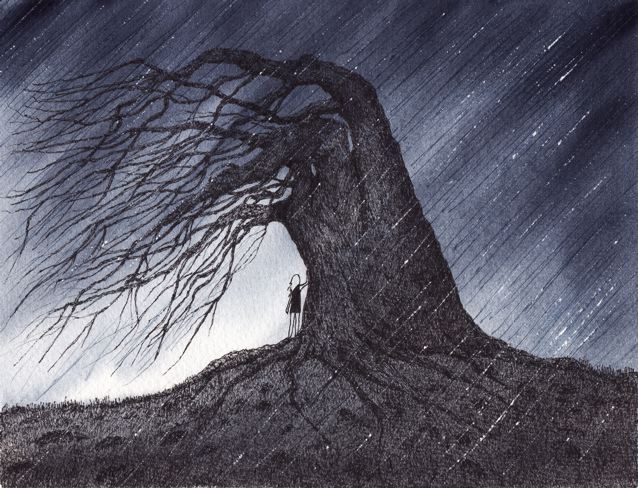 Overcast and thickly-gloomy this Thursday mid-day on California’s north coast — we could be having some thunderstorms maybe this afternoon, coming off the rainy weather bubbling eastward in the mountain valleys, as the skies look damp and chilly.
Overcast and thickly-gloomy this Thursday mid-day on California’s north coast — we could be having some thunderstorms maybe this afternoon, coming off the rainy weather bubbling eastward in the mountain valleys, as the skies look damp and chilly.
Nip ain’t the word, though — record temperatures last month: ‘In drought-plagued California, “we’re beating the record set just last year” and “not by a razor thin margin,” Daniel Swain, a PhD student at Stanford University, said.’
(Illustration found here).
According to numbers released from the NOAA, last month was the hottest June ever for five western US states, and for the lower 48, was 2.9-degrees above the 20th Century average — and oddly enough, also an overall wet one, .60-inches above normal.
Some details via Climate Central:
The U.S. West is still baking.
The temperatures for June are in and five Western states saw their warmest June ever (helping to make the month the second warmest June for the contiguous U.S.), and four continue to see their warmest year-to-date, just as 2015 hits the halfway mark.
…
The huge area of considerable warmth in the Pacific Ocean that has been hanging around for two years now is one of the main drivers for the sultry western weather, and is getting a boost from the very healthy El Niño event that looks to be in place through the end of the year.
These forces are also acting on the background warming that results from the extra heat trapped in the Earth’s atmosphere by ever-increasing greenhouse gas levels, which increases the odds for such high temperature records.
The heat spells bad news for the tenacious drought that is now in its fifth year in California, as well as newly expanded drought conditions in the Pacific Northwest, which saw a paltry winter snowpack during the balmy winter.
…
The most recent heat wave in June broke or tied 233 records across the West, primarily in the Pacific Northwest.
While that scorcher elicited much attention, such acute heat waves haven’t been the main reason the West has stayed so warm, rather it has been the persistence of above-average temperatures day-in and day-out.
“It just really isn’t getting down to normal,” Swain said.
Operative word here, ‘normal,’ and what does it really mean nowadays?
A sense of it from Capital Public Radio:
The U.S. Department of Agriculture, in its Weekly Weather and Crop Bulletin, said in the Pacific Northwest “relentless heat and increasingly dry conditions promoted a torrid crop development pace but led to worsening stress on rain-fed crops and an expansion of wildfire activity.”
The National Interagency Fire Center reported that, as of July 9, there were 33 large, active fires burning 880,000 acres in the U.S. Fourteen of those fires are in Alaska with eight in Washington state.
The forecast shows the potential for rain over the next week.
“Rain chances over the west, particularly over northern California, northwest Nevada, southern Oregon, and central Idaho and into the Rocky Mountains, looks to increase, with up to 2 inches possible,” the drought report stated.
The 6-10 day outlooks show that much of the country, including California, has high chances of above-normal temperatures.
Thunder hot…